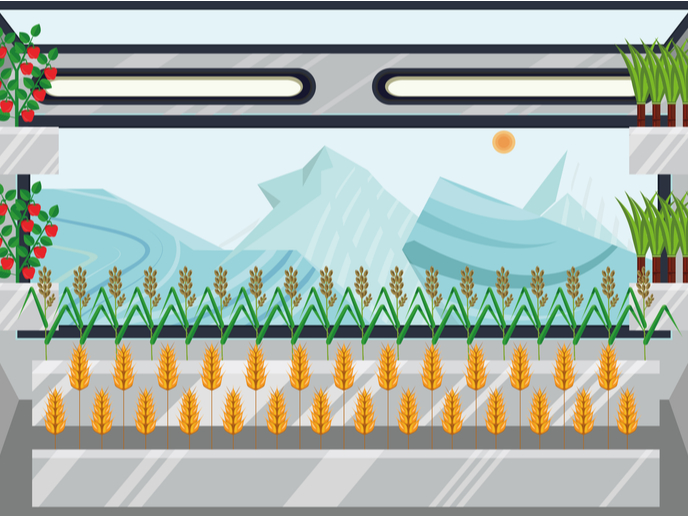Growing vegetables in space? How to harvest plants under inhospitable conditions
When the protagonist of the 2015 movie ‘The Martian’ ended up improvising a potato farm on the red planet, many wondered if something like that could happen in real life. Growing vegetables on Mars or the moon isn’t just a sci-fi curiosity. Supported by the EU-funded EDEN ISS project, a team of researchers has produced a significant amount of fruits and vegetables in the Antarctic under artificial light and without soil. In a news release by project coordinator German Aerospace Center (DLR), Hansjörg Dittus, Executive Board Member for Space Research and Technology, says: “Future, long-term crewed space missions will require locally grown food. EDEN ISS has proven the feasibility of a space greenhouse in the Antarctic and thus demonstrated that this technology could also be used to produce food on the Moon and Mars.” In the same news release, DLR researcher Paul Zabel says: “Overall, we have produced 268 kilograms of food in an area of only 12.5 square metres over 9.5 months, including 67 kilograms of cucumbers, 117 kilograms of lettuce and 50 kilograms of tomatoes.” This is enough “to supplement the diet of a future six-person crew with about one third of freshly grown produce,” according to EDEN ISS project leader Daniel Schubert from DLR’s Institute of Space Systems.
Consuming less energy
The researchers managed to produce such a large harvest with much less energy than expected, as noted in the news release. “The power consumption of the greenhouse during the Antarctic analogue mission averaged 0.8 kilowatts per square metre of cultivation area and was therefore less than half the previously assumed amount for space greenhouses – 2.1 kilowatts per square metre.” Thanks to the successful tests, the scientists have drafted a new design concept for a space greenhouse that could be launched aboard a Falcon 9 rocket. “The cultivation space will amount to about 30 square metres and is therefore almost three times as large as the area used in the Antarctic greenhouse container. This system would allow approximately 90 kilograms of fresh food to be cultivated per month, which corresponds to half a kilogram of fresh vegetables per day for each astronaut in a six-member crew,” Schubert adds. The news release states: “The concept can also be combined with a biofilter system (C.R.O.P.) whose purpose is to treat biodegradable waste and urine in order to produce a ready-to-use fertiliser solution for plant cultivation. This would make the greenhouse concept an almost completely bioregenerative life-support system for future habitats on the Moon.” Project partners hope to use the EDEN ISS greenhouse concept as the basis for further research. The 4-year EDEN ISS (Ground Demonstration of Plant Cultivation Technologies and Operation in Space for Safe Food Production on-board ISS and Future Human Space Exploration Vehicles and Planetary Outposts) project was launched to advance controlled environment agriculture technologies for plant cultivation under extreme conditions, for both terrestrial earth and space exploration. It ended in 2019, but research missions have been extended to 2021 so that other scientists can also benefit from Antarctica’s highly isolated condition. For more information, please see: EDEN ISS project website
Countries
Germany



